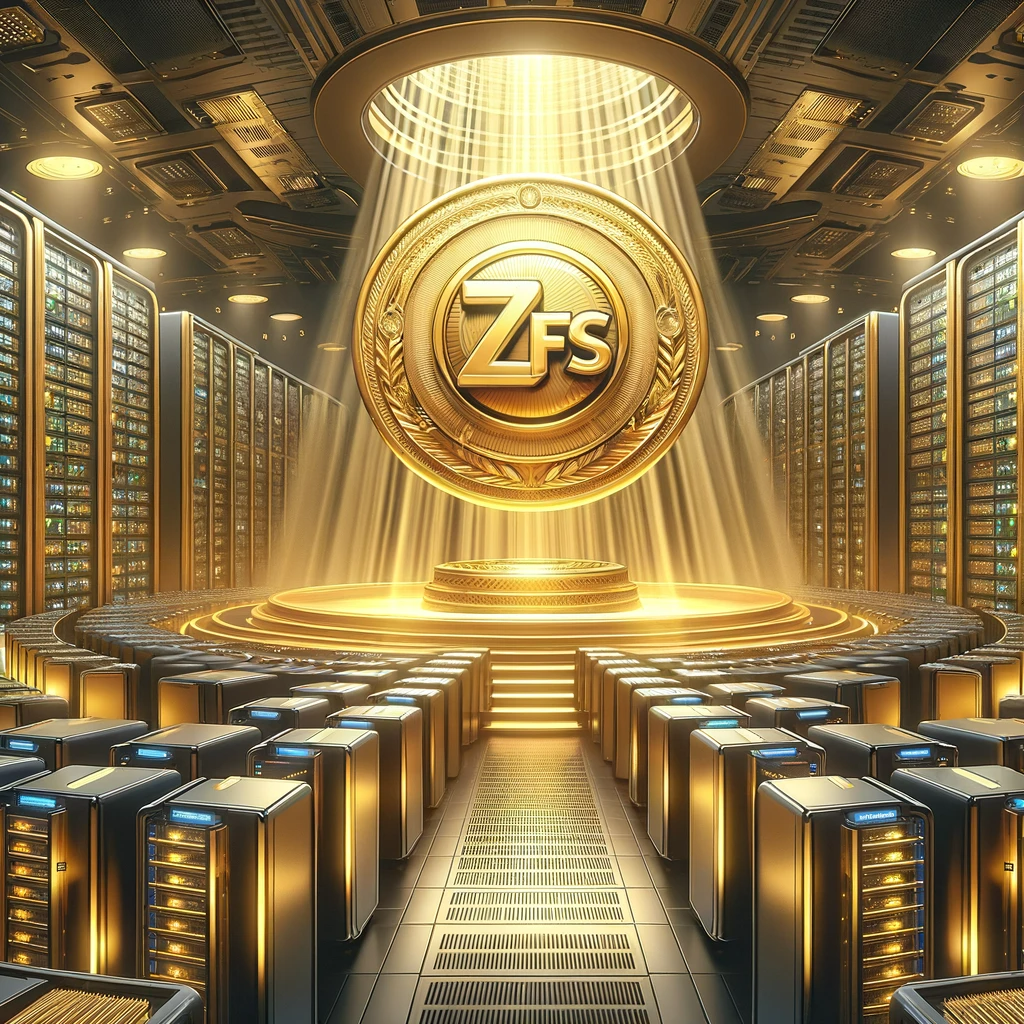ZFS, the Time-Traveling File System
Picture this: It’s the early 2000s. The tech world is buzzing with innovation, and the folks at Sun Microsystems have a eureka moment. They think, “What if we create a file system so advanced it feels like it’s from the future?” Enter ZFS, or “Zettabyte File System.” Why zettabyte? Because why aim for gigabytes or terabytes when you can dream of zettabytes? That’s like comparing a backyard kiddie pool to the Pacific Ocean.
ZFS was designed to be more than just a place to store your cat videos and spreadsheets. It aimed to ensure data integrity (because nobody likes corrupt cat videos), and it used a copy-on-write model. This means when data is changed, it’s written to a new block, preserving the old data. In other words, ZFS doesn’t just save your work; it’s like a digital historian that keeps track of all your “oops” moments too.
Now, let’s talk RAID-Z, ZFS’s answer to traditional RAID (Redundant Array of Independent Disks). RAID was like the superhero team of disk storage, combining multiple disks for redundancy and performance. RAID-Z took this idea and added a sprinkle of magic dust. It can handle disk failures with a smirk, ensuring your data’s safety without breaking a sweat.
Comparing the Titans
How does ZFS stack up against the likes of ext4, NTFS, and Btrfs, you ask? Imagine a high school yearbook. ext4, used primarily in Linux, is like the reliable student council president. It’s dependable and gets the job done but isn’t necessarily the most cutting-edge. NTFS, the backbone of Windows, is like the popular kid who’s been around forever. It’s familiar and widely used but has its quirks and limitations, especially around large volumes and files.
Btrfs, another Linux file system, is like the new kid on the block with big ambitions. It shares some similarities with ZFS, like snapshots and data integrity, but it’s still proving itself in the big leagues. ZFS, on the other hand, is like the mysterious exchange student with a toolkit that’s almost sci-fi. It has snapshots, data integrity, scalability to zettabytes, and self-healing capabilities. It’s like having a personal bodyguard for your data.
A Trip Down Memory Lane
ZFS’s journey has been quite the rollercoaster. Originally developed by Sun Microsystems, it became part of Oracle when they acquired Sun. But ZFS didn’t just stay in Oracle’s grasp. It ventured out into the world as an open-source hero, finding its way into various operating systems, including FreeBSD and Linux (though with some legal gymnastics due to licensing dramas).
In the end, ZFS isn’t just a file system; it’s a symbol of ambition and innovation in data storage. It’s like the swiss army knife in a world of plastic sporks, offering a robust, versatile solution for data management.



